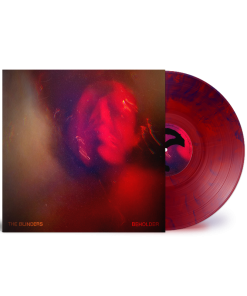Introducing Juan Pablo: Vinyl LP Juan Wauters
$ 18,99 $ 11,39
“La Onda de Juan Pablo was a travelogue of sorts, with its anthropological efforts, its parade of Latin American musicians and its choice to only feature Wauters native tongue. Introducing Juan Pablo, on the other hand, goes back and forth between Spanish and English. It is, in short, more faithful to the interculturalism that Wauters experiences daily. “”In my house, among my family, we speak in Spanish. But outside in the neighborhood, we speak in English with my friends. Several of them speak in Spanish with their parents, but not all. It doesn’t cause me any trouble to go from one language to another. I can express myself in the same way: everything is music.”” In a nod to both his home country and his adopted home, he includes an English version of “”El Hombre de la Calle”” (“”The Man on the Street””) by Jaime Roos, one of the most popular Uruguayan songwriters. The references to the land where he was born are her on the surface. Between the first track (“”Super Talking””) and the last (“”Greetings””), songs run in both languages, culminating with “”Lora””, which opens like a pop kaleidoscope and ends in a kind of cosmic brotherhood between Eduardo Mateo and Syd Barrett.
His immigrant’s side. His sense of belonging. His social life and his use of language. His need to work. And the even stronger need that his work doesn’t become monotonous. His dream of another possible world: a world where all worlds fit. Juan Wauters went through all this to introduce us to Juan Pablo. They are the same person: one among the whole crowd
Fast Delivery and Professional Packaging
Our long-standing relationship with UPS FedEx DHL and other carriers around the world gives us the ability to provide various shipping options. Our warehouse personnel will pack all goods to our exacting requirements. Your goods will go through an extensive inspection and will be securely secured prior to being shipped. Every day we ship thousands of packages to clients from all over the world. This is a sign of our determination to be the largest online retailer in the world. There are distribution centers and warehouses in Europe and the USA.
Orders that contain more than 1 item are assigned processing periods in accordance with the item.
Prior to shipment, all purchased items will be thoroughly inspected. The majority of orders are shipped within 48 hrs. Delivery is expected to take between 3 and 7 days.
Returns
The stock is dynamic and we do not completely manage it because multiple parties are involved, which includes our factory and warehouse. The actual stock can fluctuate at any time. It's possible that the stock may run out after your order has been processed.
Our policy lasts for 30 days. Unfortunately, if thirty days have passed from the date you purchased the item, we will not be able to offer you a return or exchange.
The item should not be used, and it must be in the original packaging. The item should be in the original packaging.
Related products
Vinyl LP
Vinyl LP
Vinyl LP
Vinyl LP
Vinyl LP
Vinyl LP
Vinyl LP
Vinyl LP
Vinyl LP





































